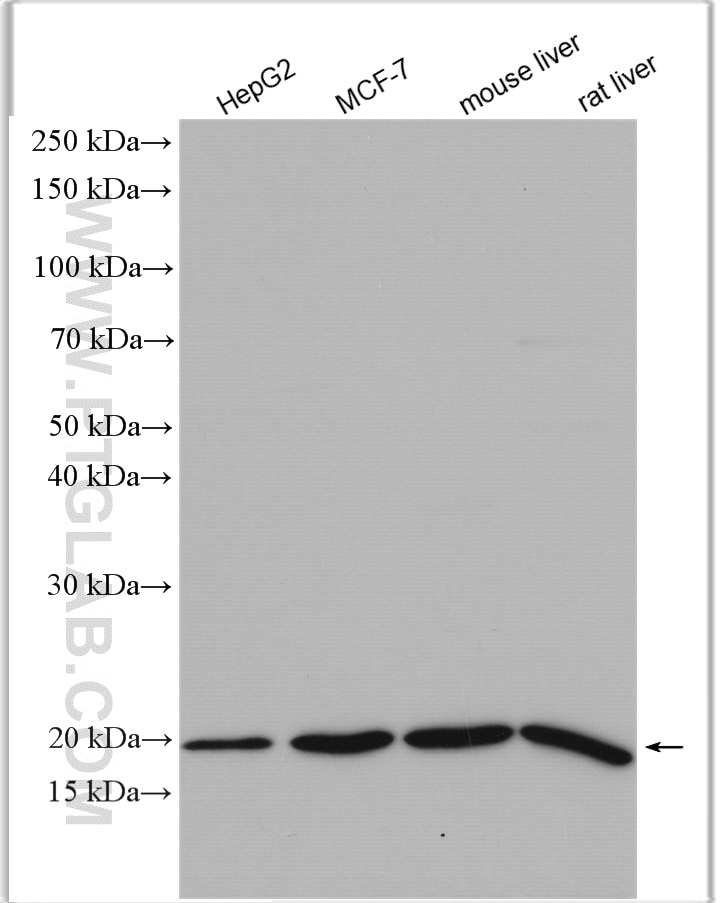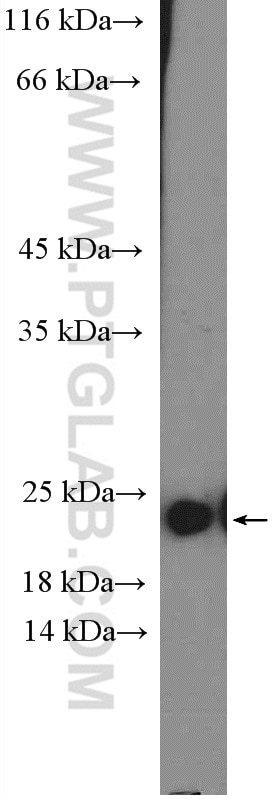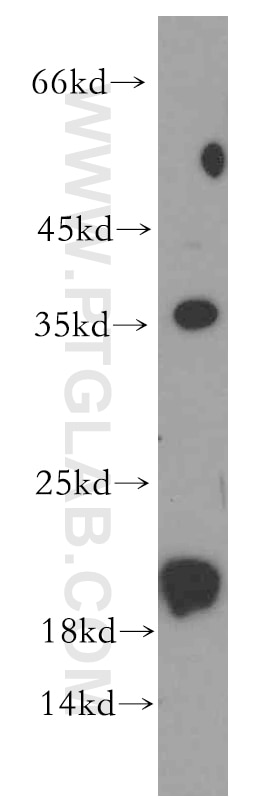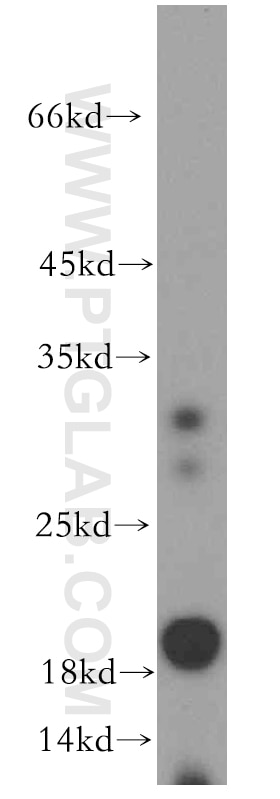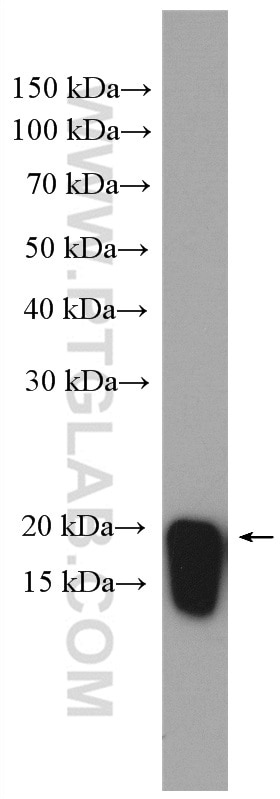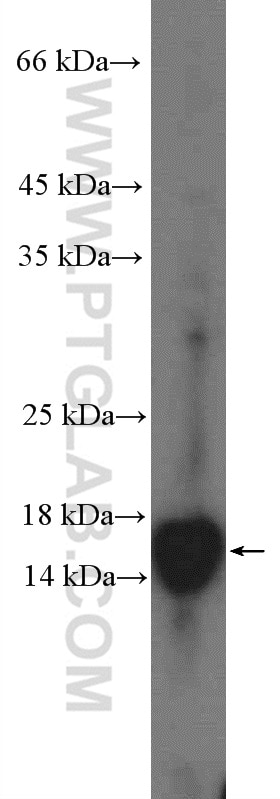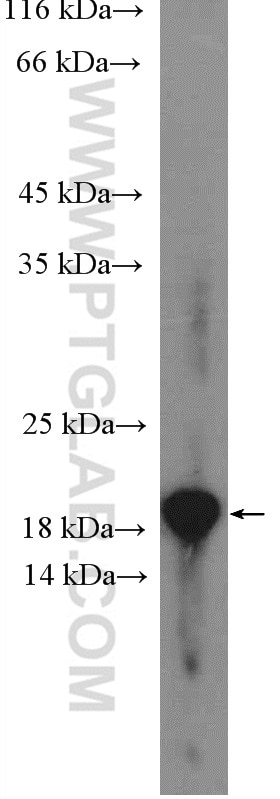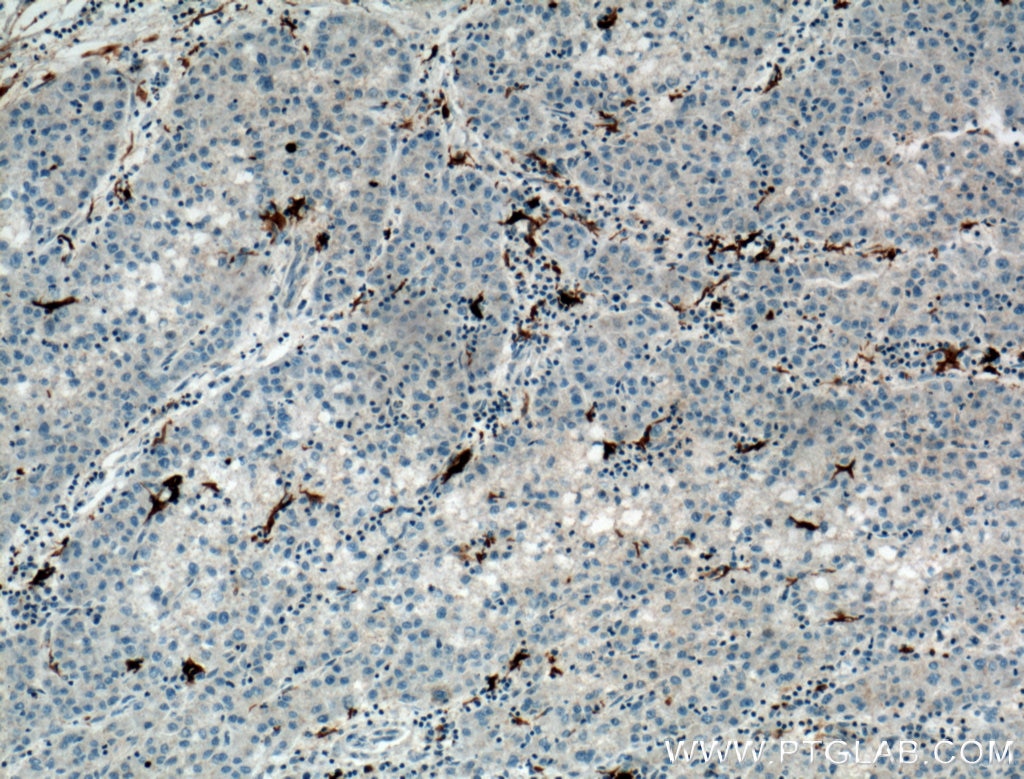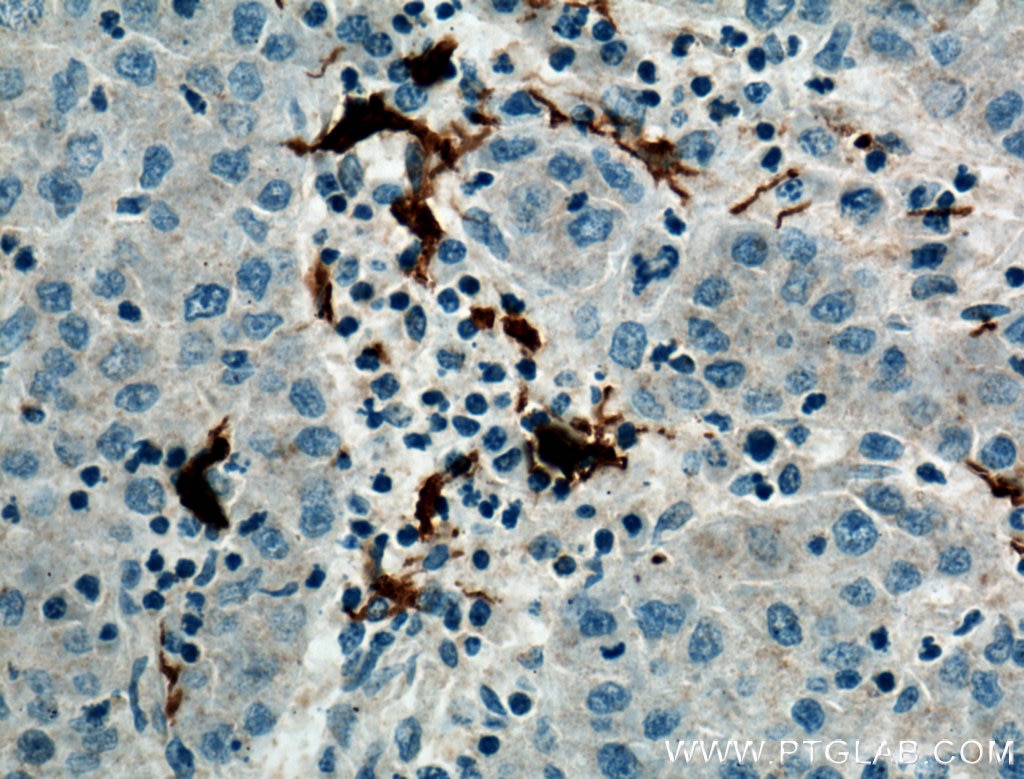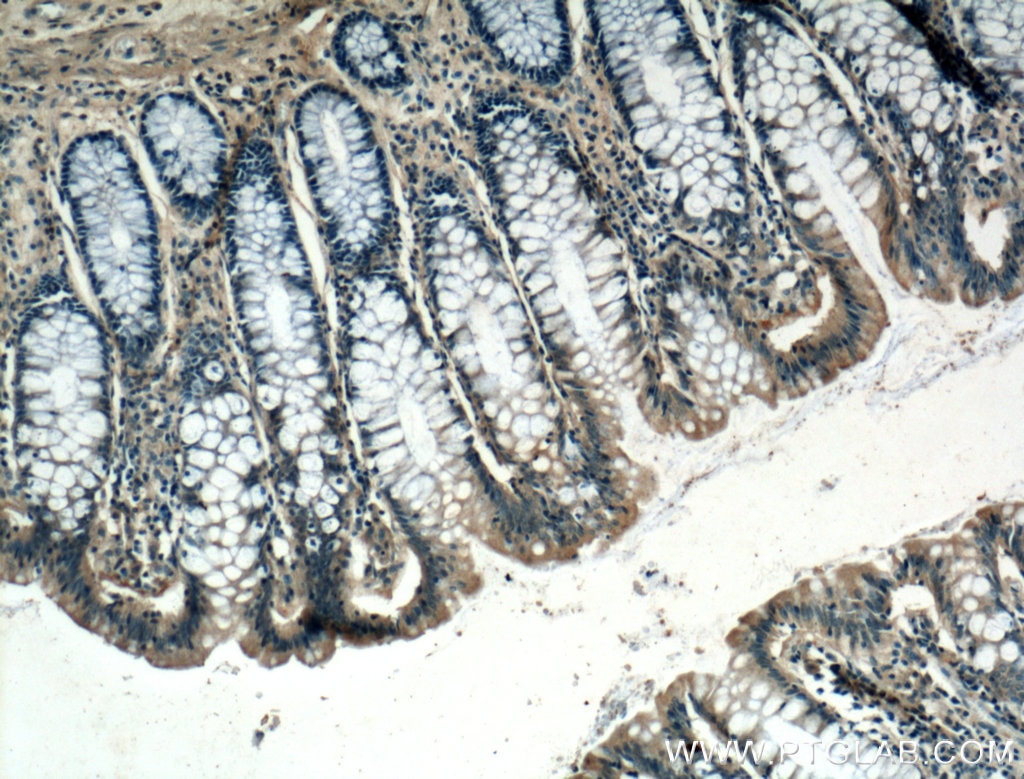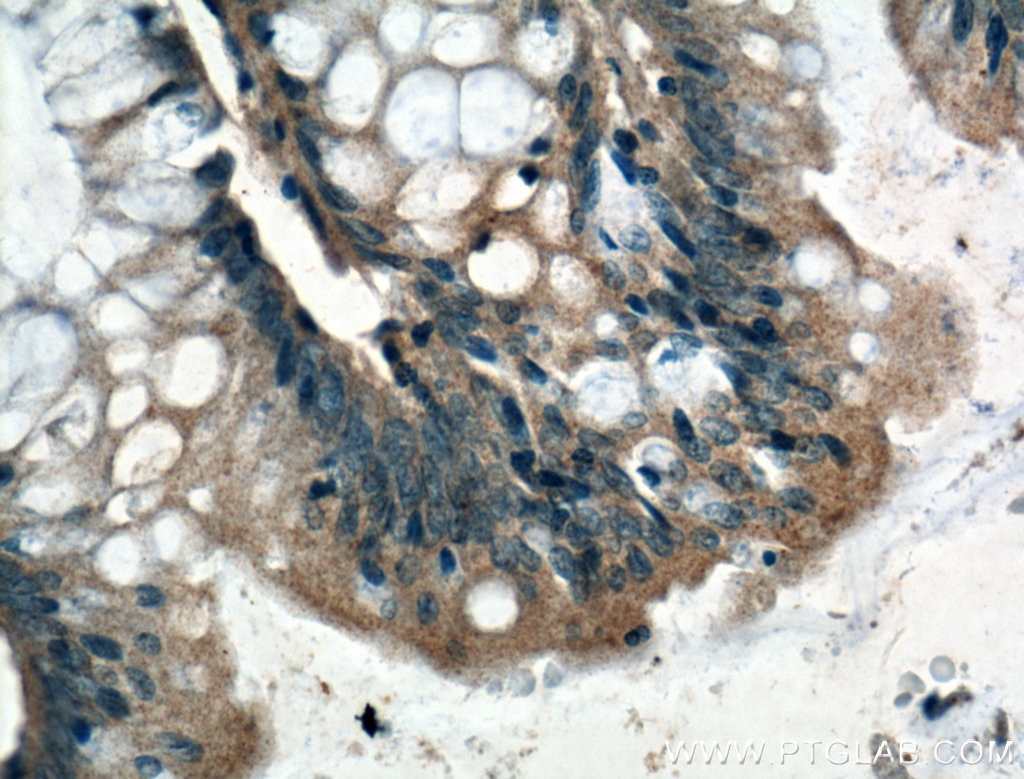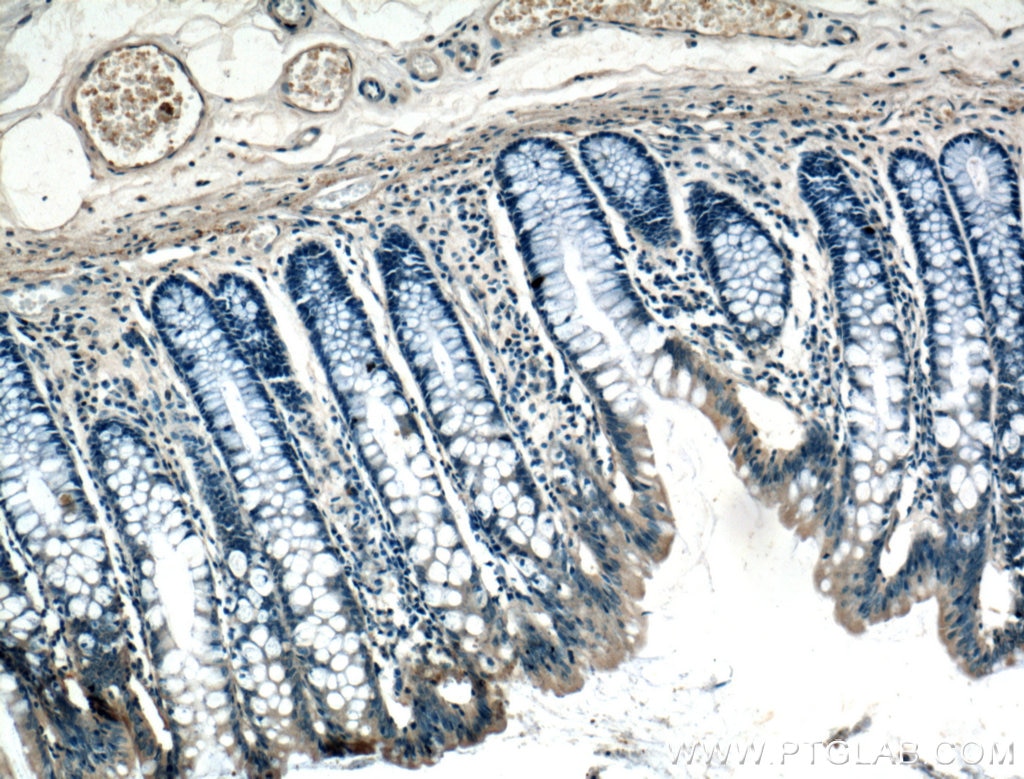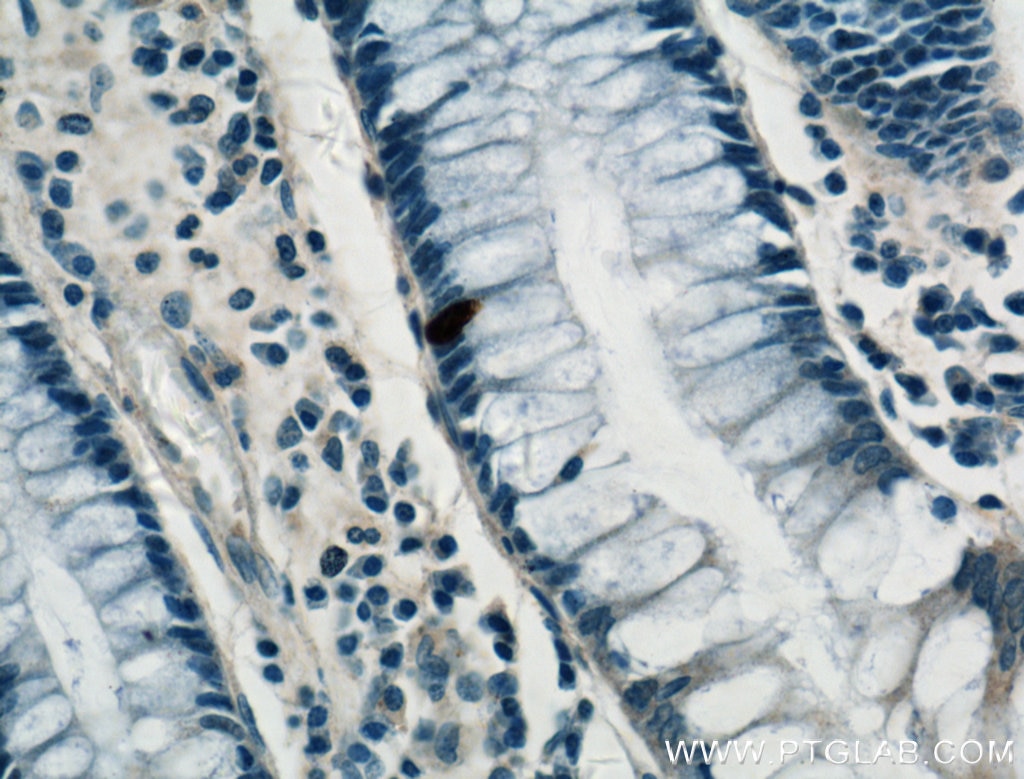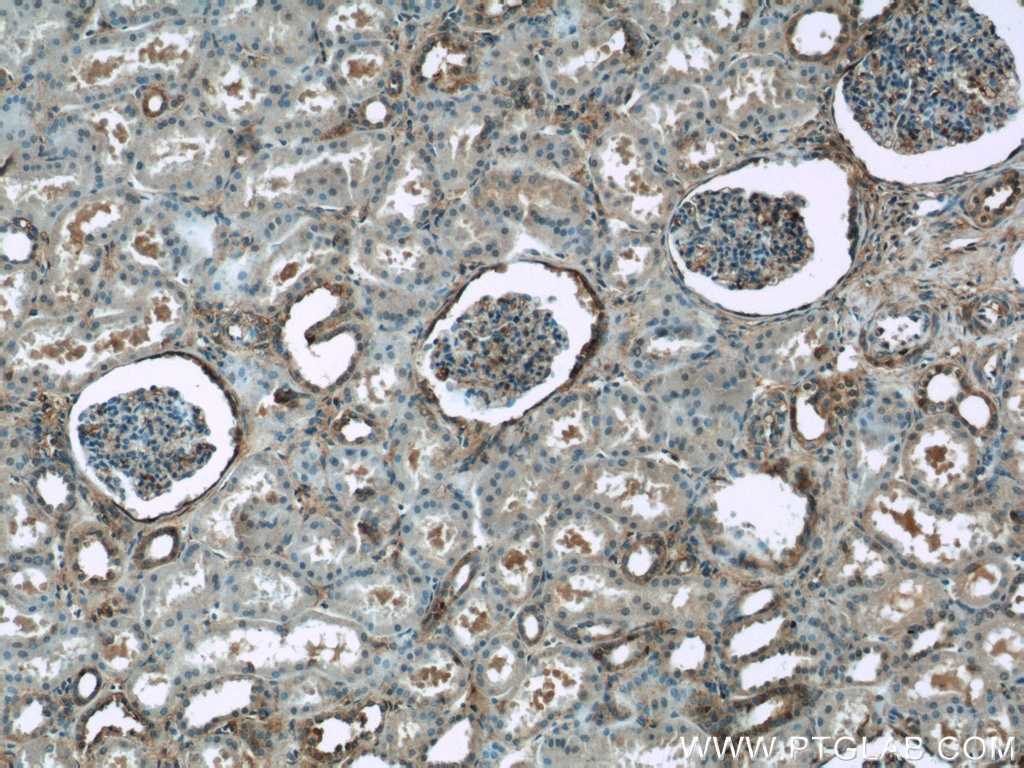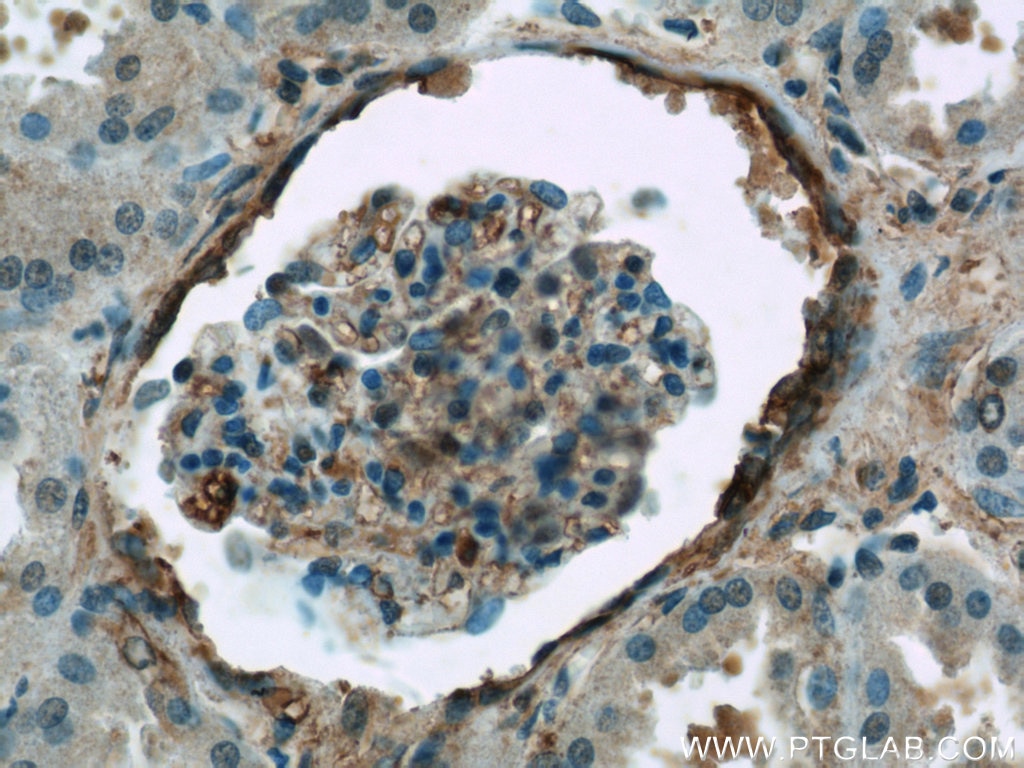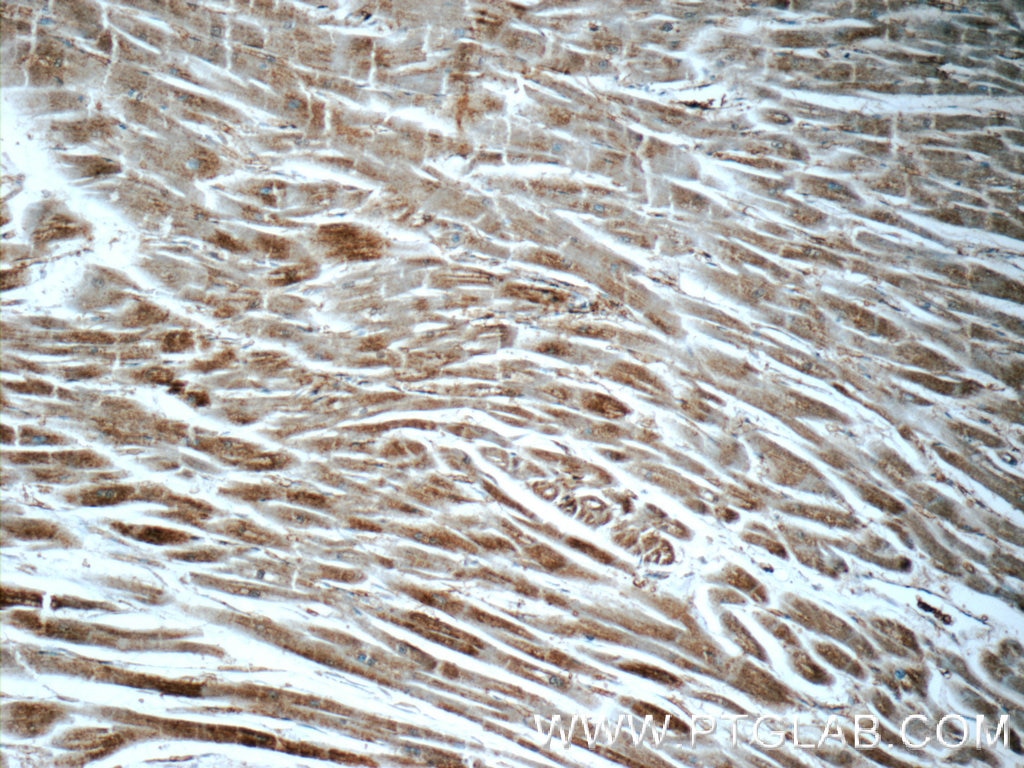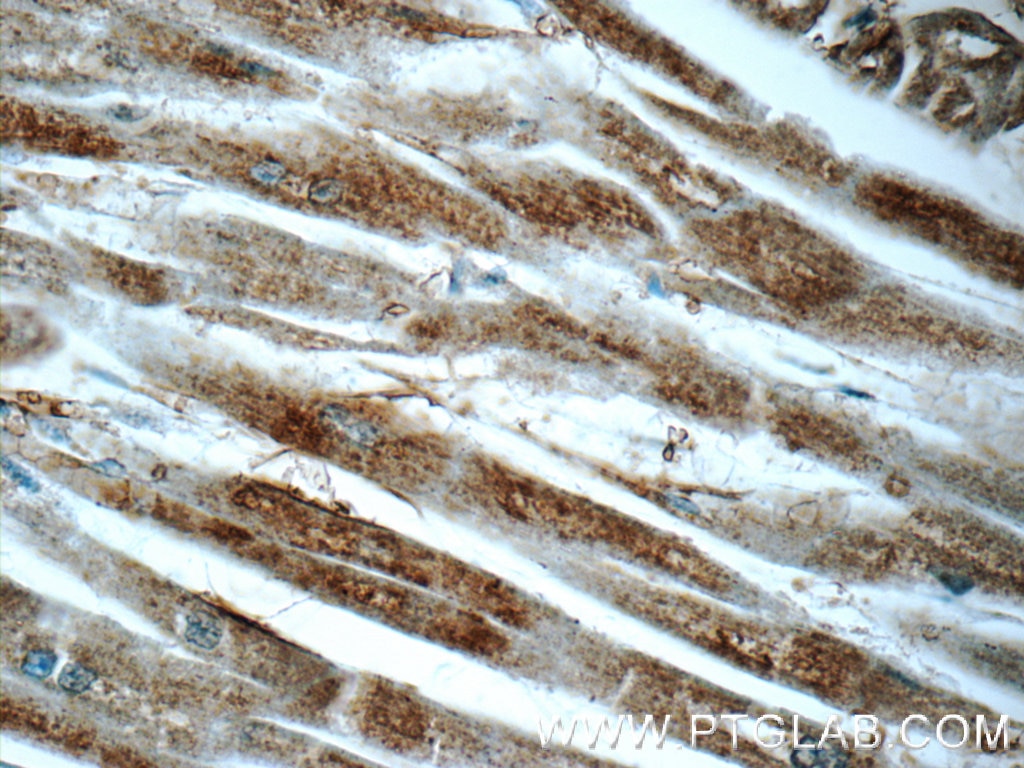- Phare
- Validé par KD/KO
Anticorps Polyclonal de lapin anti-ARF6-Specific
ARF6-Specific Polyclonal Antibody for WB, IHC, ELISA
Hôte / Isotype
Lapin / IgG
Réactivité testée
Humain, rat, souris
Applications
WB, IHC, IF, ELISA
Conjugaison
Non conjugué
N° de cat : 20225-1-AP
Synonymes
Galerie de données de validation
Applications testées
| Résultats positifs en WB | cellules HepG2, cellules A549, cellules HEK-293, cellules MCF-7, tissu hépatique de rat, tissu hépatique de souris, tissu hépatique humain |
| Résultats positifs en IHC | tissu de cancer du foie humain, tissu cardiaque humain, tissu de côlon humain, tissu rénal humain il est suggéré de démasquer l'antigène avec un tampon de TE buffer pH 9.0; (*) À défaut, 'le démasquage de l'antigène peut être 'effectué avec un tampon citrate pH 6,0. |
Dilution recommandée
| Application | Dilution |
|---|---|
| Western Blot (WB) | WB : 1:1000-1:4000 |
| Immunohistochimie (IHC) | IHC : 1:50-1:500 |
| It is recommended that this reagent should be titrated in each testing system to obtain optimal results. | |
| Sample-dependent, check data in validation data gallery | |
Applications publiées
| KD/KO | See 3 publications below |
| WB | See 13 publications below |
| IHC | See 1 publications below |
| IF | See 8 publications below |
Informations sur le produit
20225-1-AP cible ARF6-Specific dans les applications de WB, IHC, IF, ELISA et montre une réactivité avec des échantillons Humain, rat, souris
| Réactivité | Humain, rat, souris |
| Réactivité citée | Humain, souris |
| Hôte / Isotype | Lapin / IgG |
| Clonalité | Polyclonal |
| Type | Anticorps |
| Immunogène | Peptide |
| Nom complet | ADP-ribosylation factor 6 |
| Masse moléculaire calculée | 20 kDa |
| Poids moléculaire observé | 20 kDa |
| Numéro d’acquisition GenBank | NM_001663 |
| Symbole du gène | ARF6 |
| Identification du gène (NCBI) | 382 |
| Conjugaison | Non conjugué |
| Forme | Liquide |
| Méthode de purification | Purification par affinité contre l'antigène |
| Tampon de stockage | PBS with 0.02% sodium azide and 50% glycerol |
| Conditions de stockage | Stocker à -20°C. Stable pendant un an après l'expédition. L'aliquotage n'est pas nécessaire pour le stockage à -20oC Les 20ul contiennent 0,1% de BSA. |
Informations générales
ADP-ribosylation factors (ARFs) are members of the ARF family of GTP-binding proteins of the Ras superfamily, with 20 kDa protein size. ARFs bind and regulate GTP/GDP cycle by alternating between the active GTP-bound and inactive GDP-bound conformations. ARF family proteins are essential and ubiquitous in eukaryotes. Six highly conserved members of the family have been identified in mammalian cells. They function in vesicular traffic and actin remodelling and other bioprocesses in cells. The ARF6 is one of best identified ARFs It is present at the plasma membrane and to some extent on endosomal membranes where it regulates the flow of trafficking into and out of the cell and the actin cytoskeleton. The antibody is specific to ARF6.
Protocole
| Product Specific Protocols | |
|---|---|
| WB protocol for ARF6-Specific antibody 20225-1-AP | Download protocol |
| IHC protocol for ARF6-Specific antibody 20225-1-AP | Download protocol |
| Standard Protocols | |
|---|---|
| Click here to view our Standard Protocols |
Publications
| Species | Application | Title |
|---|---|---|
Int J Biol Sci Platelet-derived extracellular vesicles aggravate septic acute kidney injury via delivering ARF6
| ||
Arterioscler Thromb Vasc Biol BIG1, a brefeldin A-inhibited guanine nucleotide-exchange protein modulates ATP-binding cassette transporter A-1 trafficking and function. | ||
Int J Mol Sci Distribution of Signal Peptides in Microvesicles from Activated Macrophage Cells | ||
Sci Rep Differential regulation of synaptic AP-2/clathrin vesicle uncoating in synaptic plasticity. | ||
PLoS One TNF Stimulates Nuclear Export and Secretion of IL-15 by Acting on CRM1 and ARF6. |
Avis
The reviews below have been submitted by verified Proteintech customers who received an incentive for providing their feedback.
FH Grace (Verified Customer) (07-23-2025) | Works well for western blotting and immunofluorescence with tumor cells.
|
